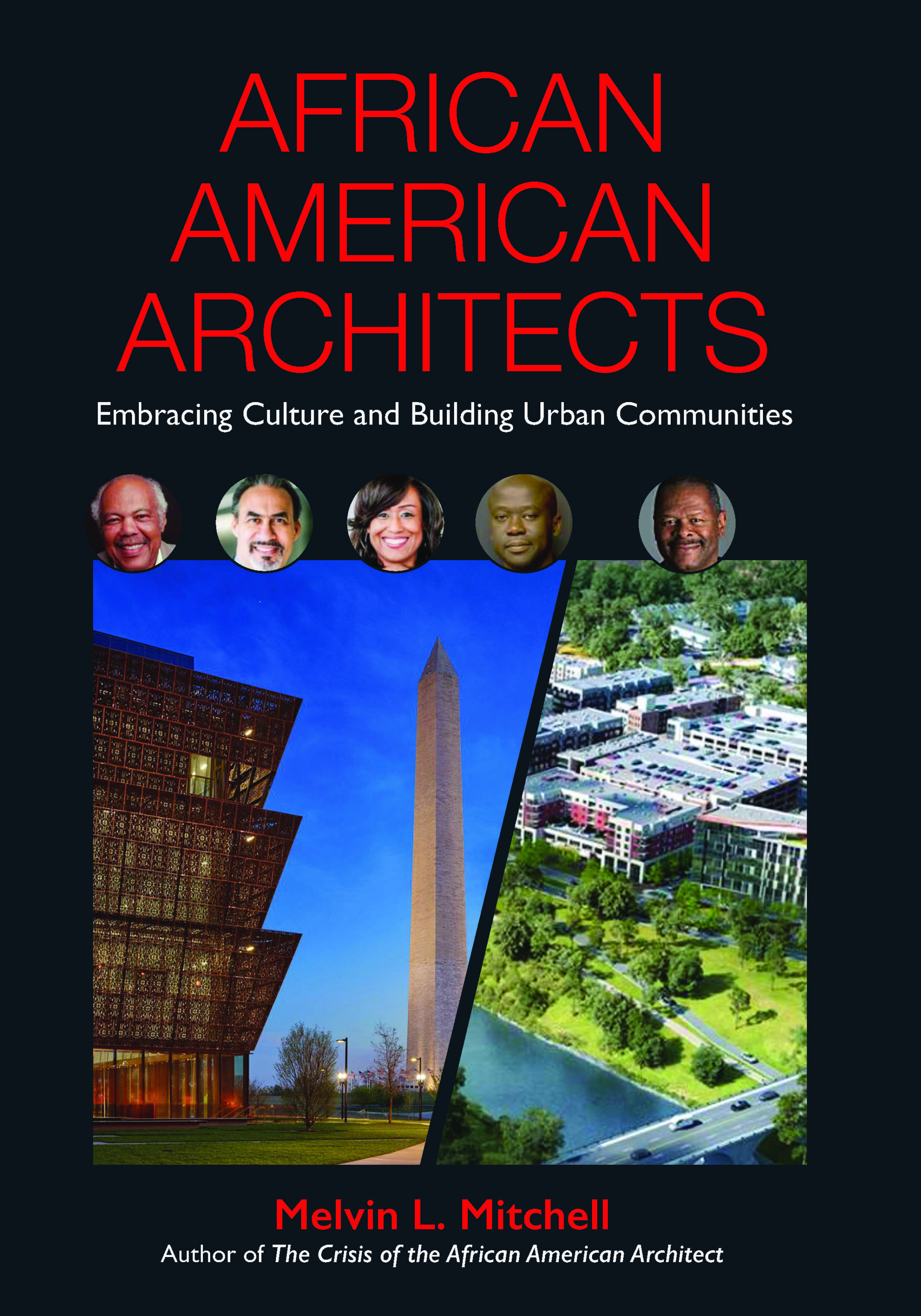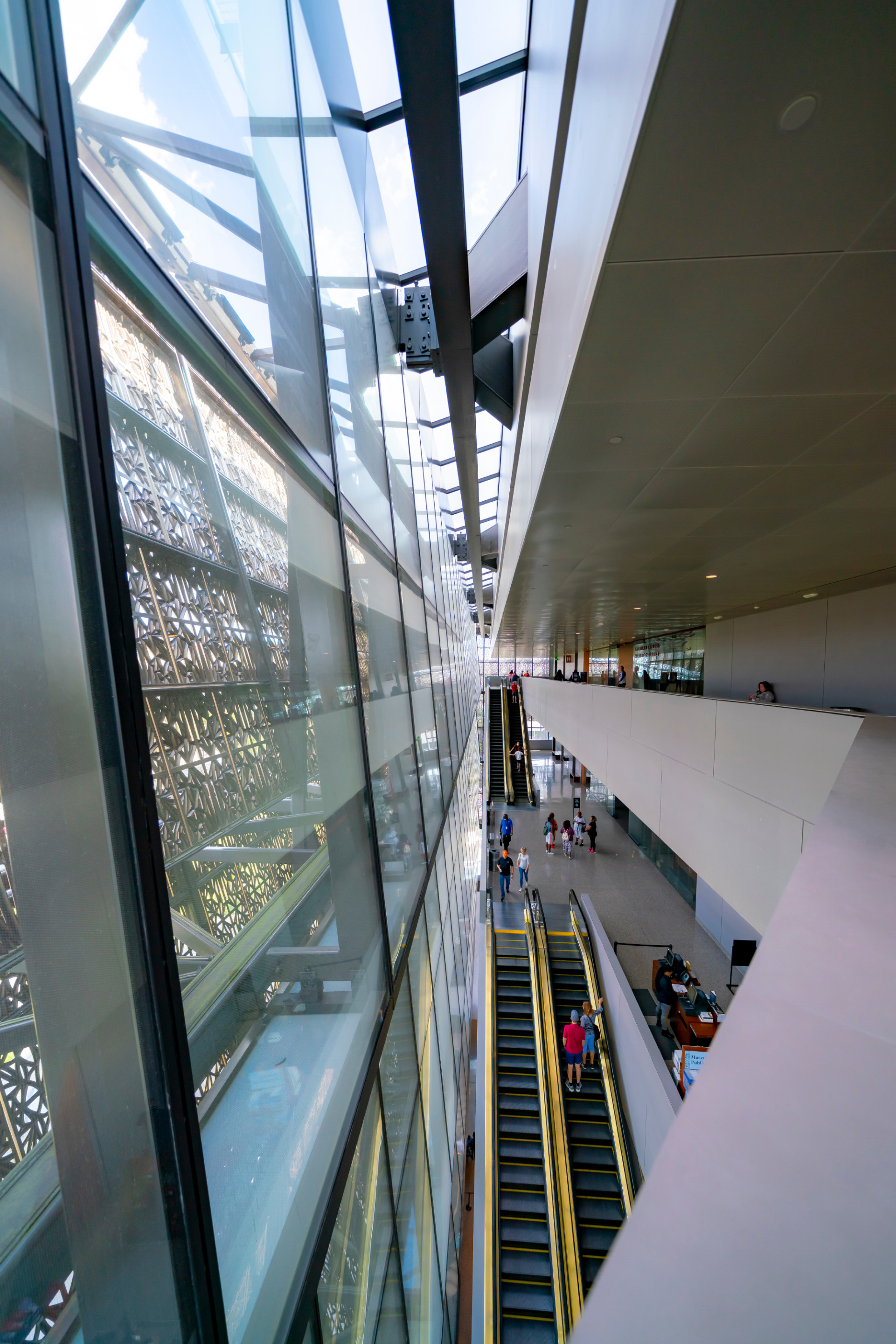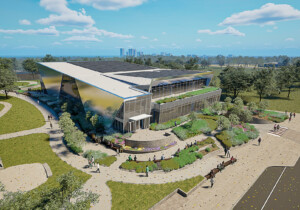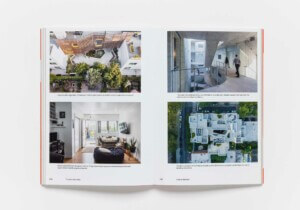A national housing crisis is destroying Black America’s prospects for maintaining cohesion and viability in the country’s cities and inner suburbs. Inside Black America resides a disjointed assortment of financial institutions, brokers, contractors, developers, architects, planners, landscape architects, engineers, fabricators, suppliers, title companies, tradespeople, property managers, unskilled laborers, and other related entrepreneurs. This collection of entities—most with memberships comprising 2 percent or less of their respective national accrediting bodies—are an anemic but nascent African American building industry.
Since the 2016 opening of the National Museum of African American History and Culture in Washington, D.C., African American architects have been experiencing a heightened level of attention throughout Black America. African American architects could parlay that attention to elevate themselves to a place of essentiality in Black America that could rival Black medical doctors and lawyers. Those two groups currently hold representation in their professions that are two and a half times that of Black architects. Realization of such an aspiration will require that Black architects undergo deep but doable attitudinal and behavior modifications, including several things not normally done by formally trained architects. One would be to read the last several National Urban League State of Black America reports. There, one will find a grim picture of the socioeconomic and financial health of Black America, a consequence of the past 15 decades of de jure and de facto policies of white suppression of Black wealth creation. The Urban League reports call for a new Marshall Plan for urban main street America to counter this force.

But who would be the actual builders and wealth-creation beneficiaries in such a plan?
No single one of the “2 percent” entities—least of all architects—can make a meaningful positive impact on the plight of Black America alone. Architects are too prone to think and talk incessantly about the priority of “design” while ignoring that they are in the real estate and construction businesses, like it or not. The mission for a new apostate wing of African American architects who conflate the still-siloed roles of architect, real estate developer, and builder must be to push hard for the transformation of the Black building industry into a new national African American affordable housing industry.
The need for a fully networked Black housing industry was first broached by Black leadership at the passage of the 1948 Housing Act but never materialized. After the 1986 creation of the Low Income Housing Tax Credit program, there quickly evolved a (virtually all white) national affordable housing industry that went on to build millions of new housing units. Those developers pocketed billions of dollars for construction, development, design, planning, and management. U.S. Department of Housing and Urban Development (HUD) research shows that much of that housing was built in Black spaces and occupied by African American people, yet almost none of those billions of dollars in low-income housing development flowed into or through the hands of Black America’s nascent building industry. Imagine the impact had half of those dollars passed through a national Black affordable housing industry instead.
A new Black affordable housing industry must utilize available and emerging tools and resources to radically alter the vast economic disparities between Black America and the rest of America. Some of those tools are included in Senator Elizabeth Warren’s American Housing and Economic Mobility Act; Representative Alexandria Ocasio-Cortez and Senator Ed Markey’s Green New Deal; a reworked Opportunity Zone legislation inspired by Senator Cory Booker; and coming climate-stabilization legislation. The country is also on the cusp of launching a several-trillion-dollar infrastructure upgrade. An equitable share of those dollars injected into and flowing through Black America–dominated spaces would ensure a very different set of National Urban League State of Black America reports by 2030.
The current white-owned affordable housing industry is a helter-skelter collection of several hundred pre-information-age operations. That industry now faces threats from a rising group of disrupters bankrolled by massive amounts of investment capital from firms willing to bet big on capturing a sizable market share of the U.S. shortage of eight to ten million affordable housing units. These disrupters seek to bring lower costs to affordable housing creation through full integration of the silos of capital, design, and a revolutionized construction industry.
These changes offer tremendous opportunities. A new Black affordable housing industry must emulate the disrupters and take advantage of all new legislative tools.
Development in Black America’s Urban Space, 1960s–2020
Since the 1960s, the country has seen hundreds of billions—probably trillions—of public and private sector dollars expended in programs that together amounted to a sort of failed Marshall Plan for Black America: the War on Poverty, the Great Society, the Equal Employment Opportunity Act, the Model Cities Program, affirmative action, Black capitalism, the Community Reinvestment Act, the Housing and Community Development Act, and so on, ad nauseam.
By the early 1980s, these urban rebuilding activities coincided with the rise of New Urbanism. That movement never carried a hint of racism or hostility toward African Americans, but for a host of reasons New Urbanism—like architecture—was mainly an all-white-people affair, and hundreds of new community redevelopment projects sprung up across the nation, most in big cities, and many on the sites of large public housing projects with predominantly Black and brown populations. New Urbanism was embraced by the HUD initiative known as HOPE VI (Housing Opportunities for People Everywhere). This program, which began in 1992, saw nearly $6 billion in public funds leveraging even greater amounts of private funds to totally remake “the projects.” The nation’s largest, most troubled public housing sites (which were almost always occupied totally by Black or brown people) became prime objects for demolition and were rebuilt at doubled, tripled, or sometimes greater densities as mostly upscale and expensive housing units on the same plot of ground. In this sense, the HOPE VI program was a reincarnation of the 1960s Urban Renewal leveling of communities, neighborhoods, and homes occupied by large swaths of Black America that came to be known as “Negro Removal.”
HOPE VI and affordable housing developers (and their architects and contractors) are virtually never Black or from other underrepresented minorities. Over the past decade, I have been witnessing the same affordable housing destruction and HOPE VI redevelopment script being played out across urban America, including in my old neighborhood, the Jordan Downs public housing project in Watts, Los Angeles, and in my adopted hometown of Washington, D.C.
Future redevelopment endeavors must prioritize Black wealth creation, and to understand what this could look like, there are examples that we can turn to.

Revisiting Three Big Black Wealth Creation Initiatives Since 1966
New Cities: Soul City, North Carolina
In 1968, Floyd McKissick stepped down from leading the Congress of Racial Equality to pursue his vision of building a new freestanding city in Warren County, North Carolina. Soul City was envisioned by McKissick as having a full build-out population of 55,000 people on a 5,000-acre tract of land. McKissick insisted that Soul City would be open to all races. He was equally adamant that African Americans would be the dominant planners, designers, builders, and owners of most of Soul City’s land and business enterprises.
McKissick and his planners had what they considered to be the perfect model in the planned new town of Columbia, Maryland. Columbia’s visionary founder, James Rouse, envisioned a town of 100,000 people of all races living in social harmony in a 14,000-acre development. Columbia met and surpassed those goals. Today, an aerial view of Columbia’s Town Center and city beyond looks largely identical to the 1968 architectural model of the proposed city. Today’s Columbia is a city of 100,000 whose population is roughly 50 percent white and 50 percent nonwhite, with African Americans making up half of the nonwhite population.
For Soul City, McKissick scraped together a few million federal dollars for initial infrastructure costs, but he was unable to overcome huge obstacles, including the 1973 oil crisis and the racial politics of archconservative North Carolina senator Jesse Helms. With no private investment capital commensurate with the money available to Rouse for Columbia, Soul City’s population never exceeded 200. Today, nearly 50 years after McKissick was forced to fold on his dream of building a successful new city in North Carolina, there are tools, conditions, attitudes, new wealth sources, and political power in place that together scream out “somebody needs to try this again!”
New Towns in Town: Fort Lincoln, Washington, D.C.
A 1960s vision of a “New Town in Town” in Washington, D.C., was implemented by Theodore Hagans Jr., a graduate of Howard University’s engineering school. Hagans gained control of a nearly 360-acre parcel of vacant land on the border of Prince George’s County, Maryland, just several miles from downtown D.C. in an area now known as Fort Lincoln. The project’s master plan called for thousands of new homes and apartment units, with a sizable shopping mall, two public schools, ample open space, and recreational facilities. By the mid-1970s, Hagans had become the largest Black developer in D.C. He became the sole owner of all rights to redevelop Fort Lincoln New Town. Fort Lincoln’s population today is majority African American with a growing number of white and other families and individuals.
The project is now being completed under the ownership and executive leadership of Hagans’s daughter Michele Hagans, also a Howard engineering school graduate. Conditions and circumstances today are ripe in many American cities and inner suburbs for the replication of the Hagans family’s vision.
BUY THE BLOCK
The third and quite possibly most important of the example initiatives is a now seven-year-old movement gaining momentum throughout Black America’s cities and suburban populations. This movement’s participants range from the new rich Black athletes, entertainers, media moguls, and high-tech entrepreneurs to the Black working-class poor. The movement is known simply as “Buy The Block,” or BTB.
The initial BTB model was founded by entrepreneur and real estate investor Lynn P. Smith in Cincinnati in 2013. Smith created an African American–owned real estate crowdfunding portal that allows people to invest in local real estate in amounts as low as a few hundred dollars. The idea is scalable from the single house or lot in an
urban neighborhood up to the creation of a new city. A recent high-profile example of BTB is a mixed-use commercial project launched by the late Nipsey Hussle in South Central Los Angeles.
An even more pointed recent example is the initiative of a phenomenally successful (“mainstream”) African American developer, Donahue Peebles, based in Miami. Peebles launched a $500 million fund from his vast equity capital sources that will provide equity capital to minority-owned real estate developers whose focus is on affordable and workforce housing and related commercial uses. The initiative will leverage thousands of new houses and apartments at combined costs and values exceeding billions of dollars.
Equitable Urbanism
Today it is increasingly becoming common knowledge that the brutal 1921 white race riot that destroyed Greenwood and a dozen other large Black building and wealth-creation undertakings in Tulsa, Oklahoma, served to snuff out Black large-scale building ambitions and culture over nearly the ensuing 50 years. The Urban Renewal and New Urbanism movements of the 1960s to 2020 have been beset by systemically racist policies that blocked any further city-building Black-led initiatives. The period of 2020 to 2040 offers an opportunity to achieve full redress from the prior 52 years of continuing suppression of Black wealth creation: Equitable Urbanism.
The only path to achieving truly Equitable Urbanism is through a fully mobilized Black America that actually leads or plays meaningful partnering roles in an urban main street Marshall Plan rebuilding effort. Equitable Urbanism can incorporate and build on the old New Urbanism’s big core architectural idea. There is no need to reinvent that wheel. In rebuilding urban space with the required millions of units of affordable housing and 21st-century physical and cyber infrastructure, Equitable Urbanism must be the indispensable framework used to evaluate any attempts to answer the question I posed: Who will be the builders and wealth-creation beneficiaries?
Melvin L. Mitchell is the author of African American Architects: Embracing Culture and Building Urban Communities, published this year, and The Crisis of the African American Architect: Conflicting Cultures of Architecture and (Black) Power, published in 2002. He has been a practicing architect in Washington, D.C., for 45 years. He is a fellow of the American Institute of Architects, a past president of the Washington, D.C., Board of Architecture, and former director at the Institute (now School) of Architecture + Planning at Morgan State University in Baltimore (1997–2002). He was a professor at the University of the District of Columbia (1986–94, 2003–14) and James E. Silcott Endowed Chair at Howard University (2016–18). His architecture degrees are from Howard University and the Harvard Graduate School of Design.










